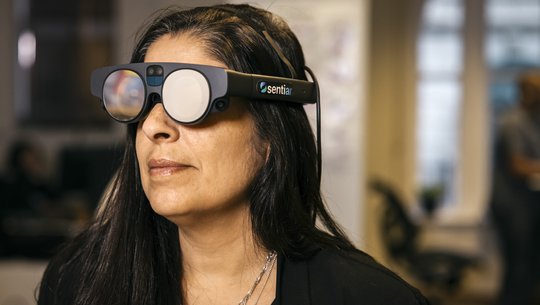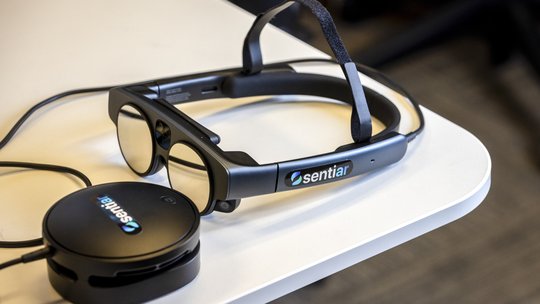
Jonathan Silva, a professor of biomedical engineering at Washington University in St. Louis, has always been interested in science that improves cardiac health.
In his research lab at WashU, Silva uses computer modeling and biophysics methods to improve therapies for irregular heart rhythms, or arrhythmia — one of the most prevalent cardiac conditions in the United States, affecting roughly 2% of Americans. As co-founder and chief technology officer of SentiAR, he supplements this focus on basic science with work that has more direct applications: helping electrophysiologists see better when performing cardiac ablations, a common treatment for arrhythmia. Another upside: He gets to collaborate with his wife.
Enter Dr. Jennifer Silva, also a professor at WashU, and SentiAR’s co-founder and chief medical officer. A pediatric cardiologist and electrophysiologist, she performs cardiac ablations routinely. With this procedure, she and other doctors insert thin, flexible tubes called catheters into blood vessels and steer them to the heart, then send zaps of heat or cold energy to create small scars around the organ, meant to block its irregular beats.
Through SentiAR, the Silvas are the co-creators of a patented imaging tool called CommandEP — a mixed-reality software that displays a 3D hologram of a patient’s heart via a hands-free headset worn by the cardiologist in the operating room. It is designed to improve surgical accuracy, streamline communication in the OR, as well as integrate, contextualize and clearly display the large amounts of patient health data generated throughout the procedure. It is currently being piloted at hospitals in Boston, New York and New Jersey, and the company plans to rapidly expand deployments over the next 24 months.

“The main purpose of CommandEP is to make the electrophysiologist better at their job by allowing them to see more accurately,” Jonathan Silva says. Physician users not only can see better; they can control their display with slight movements of their head. The name “SentiAR” reflects this goal of clarifying and amplifying a full-sensory view: a combination of the Spanish verb “sentir,” which means “to feel,” and the acronym “AR” for “augmented reality.”
The idea for SentiAR started in 2015 when Jonathan Silva attended a conference hosted by Microsoft. The corporation was unveiling cutting-edge technologies and soliciting input from engineers and scientists on how to best put them to use. These included the company’s HoloLens headset — essentially a computer fastened to the user’s head — and they showed a three-dimensional heart as a sample visual. Silva called his wife, and they began discussing possible applications of the headset in her clinical practice.
Better, more efficient visualization tools are needed in the field of electrophysiology largely due to the constraints of maintaining a sterile operating environment. Traditionally, the physician has their hands on the catheter and must communicate verbally with a team member across the room every time they want to change their view of anatomical images and important health data. This can create inefficiencies and misunderstandings. Jennifer’s firsthand experience with these limitations, and Jonathan’s ability to test new solutions in his lab, pushed the pair to consider how they might improve the procedure for doctors and patients.

As the couple began developing 3D-imaging software (they now use the Magic Leap headset), a variety of support systems aided them in translating their innovation into a viable commercial product, including Arch Grants and WashU’s Office of Technology Management.
In 2018, the Silvas recruited Berk Tas to join SentiAR as CEO. Tas grew up in Turkey and moved to the U.S. for college, studying electrical engineering, physics and business. This is his first time at the helm of a company, but he brings substantial experience in medical device development and commercialization, as well as an ambitious vision for SentiAR. The trio currently is supported by a team of 14 full-time employees, including specialists in engineering, quality control and operations.
With this team, CommandEP’s capabilities are poised to expand. New iterations will continue to refine and advance the 3D visualization tools, making the mixed-reality display more dynamic and possibly integrating a voice command capability so electrophysiologists can precisely manipulate the images they need to see at any given moment. Future versions also might include artificial intelligence components that would allow electrophysiologists to consult with a virtual community of physicians in real time. SentiAR’s continued expansion will also involve more end users across the country.
By sticking to their expertise in cardiac health and rooting themselves in St. Louis’ vibrant startup scene, SentiAR has developed a product with potential for far-reaching impact.
Explore more stories about inspiring St. Louis entrepreneurs who are contributing to the growth and success of the area's startup community.
STLMade is a movement within the St. Louis metro that shines a light on the amazing things our innovative, tenacious, big-hearted people are doing. It’s supported by a region-wide collaboration of residents, local leaders, institutions, organizations, businesses and nonprofits helping to tell our story — that St. Louis is a place where you can start up, stand out and stay.



